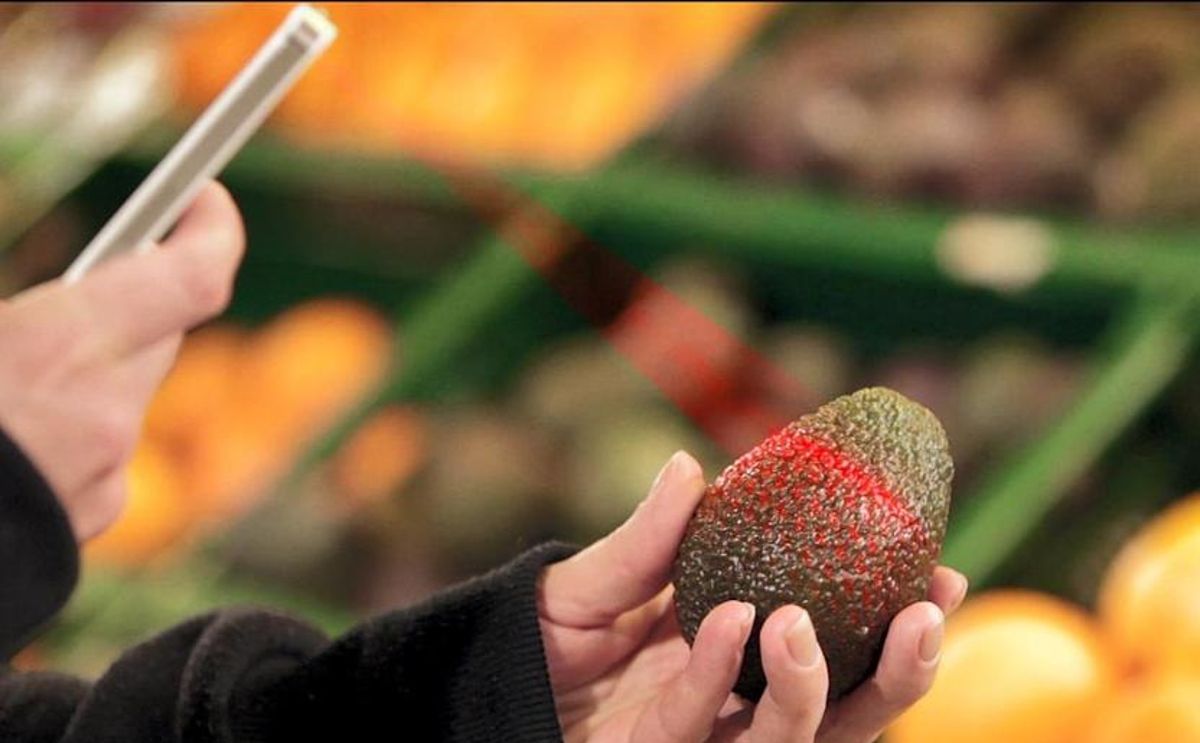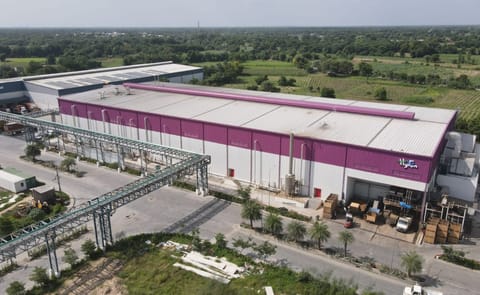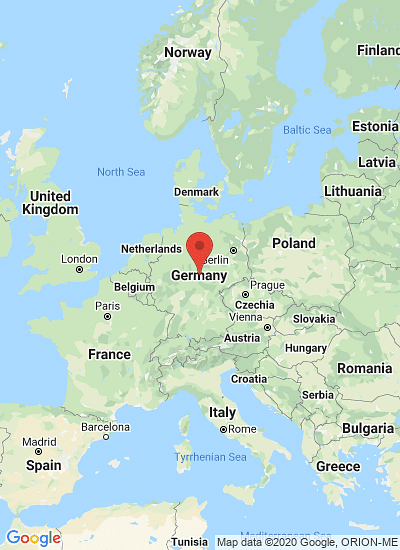Near infrared spectral analysis for mobile applications for on-site food freshness testing.
Is Infrared spectral analysis (NIR) coming to your smartphone?

In the potato industry several analytical applications are in use based on Near Infra Red (NIR) to characterize products.
A German research institute sees applications even at home, for example distinguishing similar looking substances such as sugar and salt, a mixup that has great significance in food preparation.
Complex compositional analyses can also provide information about the quality, ripeness or freshness of products.
Therefore, Fraunhofer IPMS is researching and developing the smallest energy-efficient scanner systems, which enable non-contact and mobile freshness testing on site.
Freshness testing using near-infrared spectral analysis
In the field of analysis of materials in general, but especially in the case of food and its freshness, near infrared (NIR) spectral analysis is a proven method in laboratory use. Highly accurate instruments are able to provide precise information about the condition of the product at the time of measurement.
However, it becomes problematic when the sample changes in the period between sampling and measurement in the laboratory, or when results are needed quickly. Many new applications could benefit from NIR spectral analysis if the systems can be miniaturized sufficiently for mobile use and made available at low cost.
For this reason, the Fraunhofer Institute for Photonic Microsystems IPMS is developing ultra-small analysis devices that can even be integrated into handhelds, tablets or, in perspective, smartphones. The use of micro-electromechanical systems (MEMS) enables highly compact systems that can be manufactured cost-effectively in large quantities.
The quality of the measurements is competitive for many important applications despite the small size. The acquired data are chemometrically analyzed on site or online and specific characteristics are extracted from them.
This makes it possible, for example, to make direct statements about the ripeness and freshness of food. Other applications such as checking correct mixing ratios in food processing, rapid incoming and outgoing goods checks or selection in recycling or reuse processes can also be served.
Current research at Fraunhofer IPMS combines a simple technology for the MEMS component with a large addressable spectral range of the system and a high degree of modularity.
The core of the system is a MEMS scanning mirror, which deflects the incident collimated light beams onto a grating mounted in the system. A selection of different spectral diffraction gratings is possible, which can be optimized and used for specific applications.
Presentation of spectral analysis at the Analytica trade fair in Munich
The current demonstration system, which can also be seen at the Fraunhofer IPMS booth at the Analytica trade fair in Munich from June 21 to 24, addresses the proven spectral range from 950 nm to 1900 nm with a spectral resolution of 10 nm.
Currently, the system achieves a build volume of about 2 cm³. However, further miniaturization is possible.
The measurements are performed in typical arrangements depending on the sample properties, for example in transmission for liquid media or sufficiently transparent solids or in diffuse reflection for less transparent samples with sufficient scattering cross-section.
The optical coupling of the spectrometer is possible as free-beam optics or via coupled fibers. In the demonstration system, the detection of white powders is shown.
This could be salt, sugar, starch or flour, but numerous substances that appear visually similar can be reliably detected and assigned.
Visitors to the Analytica trade fair in Munich can find Fraunhofer IPMS at booth #A3-227.
A German research institute sees applications even at home, for example distinguishing similar looking substances such as sugar and salt, a mixup that has great significance in food preparation.
Complex compositional analyses can also provide information about the quality, ripeness or freshness of products.
Therefore, Fraunhofer IPMS is researching and developing the smallest energy-efficient scanner systems, which enable non-contact and mobile freshness testing on site.
Freshness testing using near-infrared spectral analysis
In the field of analysis of materials in general, but especially in the case of food and its freshness, near infrared (NIR) spectral analysis is a proven method in laboratory use. Highly accurate instruments are able to provide precise information about the condition of the product at the time of measurement.
However, it becomes problematic when the sample changes in the period between sampling and measurement in the laboratory, or when results are needed quickly. Many new applications could benefit from NIR spectral analysis if the systems can be miniaturized sufficiently for mobile use and made available at low cost.
For this reason, the Fraunhofer Institute for Photonic Microsystems IPMS is developing ultra-small analysis devices that can even be integrated into handhelds, tablets or, in perspective, smartphones. The use of micro-electromechanical systems (MEMS) enables highly compact systems that can be manufactured cost-effectively in large quantities.
The quality of the measurements is competitive for many important applications despite the small size. The acquired data are chemometrically analyzed on site or online and specific characteristics are extracted from them.
This makes it possible, for example, to make direct statements about the ripeness and freshness of food. Other applications such as checking correct mixing ratios in food processing, rapid incoming and outgoing goods checks or selection in recycling or reuse processes can also be served.
Current research at Fraunhofer IPMS combines a simple technology for the MEMS component with a large addressable spectral range of the system and a high degree of modularity.
The core of the system is a MEMS scanning mirror, which deflects the incident collimated light beams onto a grating mounted in the system. A selection of different spectral diffraction gratings is possible, which can be optimized and used for specific applications.
Presentation of spectral analysis at the Analytica trade fair in Munich
The current demonstration system, which can also be seen at the Fraunhofer IPMS booth at the Analytica trade fair in Munich from June 21 to 24, addresses the proven spectral range from 950 nm to 1900 nm with a spectral resolution of 10 nm.
Currently, the system achieves a build volume of about 2 cm³. However, further miniaturization is possible.
The measurements are performed in typical arrangements depending on the sample properties, for example in transmission for liquid media or sufficiently transparent solids or in diffuse reflection for less transparent samples with sufficient scattering cross-section.
The optical coupling of the spectrometer is possible as free-beam optics or via coupled fibers. In the demonstration system, the detection of white powders is shown.
This could be salt, sugar, starch or flour, but numerous substances that appear visually similar can be reliably detected and assigned.
Visitors to the Analytica trade fair in Munich can find Fraunhofer IPMS at booth #A3-227.
Like to receive news like this by email? Join and Subscribe!
Get the latest potato industry news straight to your WhatsApp. Join the PotatoPro WhatsApp Community!
Highlighted Company
Sponsored Content
Sponsored Content
Sponsored Content
Sponsored Content










